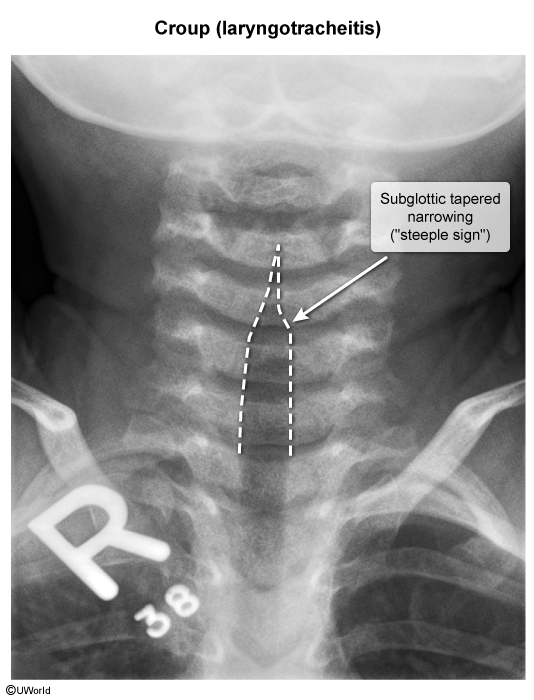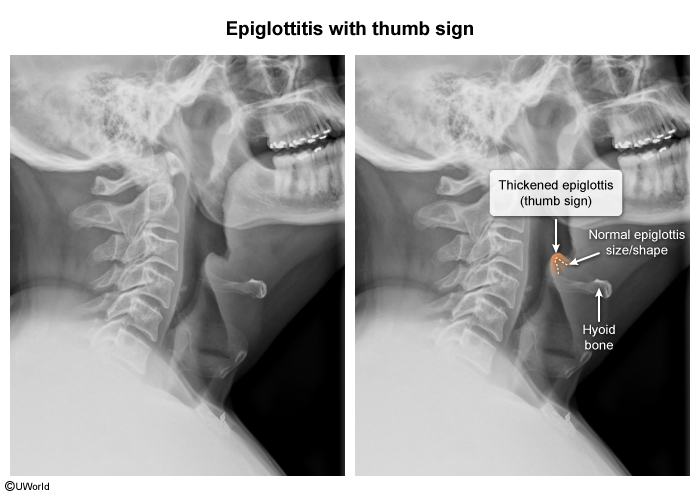Bacterial Tracheitis
Article Sections
Introduction
Bacterial tracheitis is a rare, potentially life-threatening bacterial infection of the trachea and surrounding structures that primarily affects children.
Pathophysiology and risk factors
In healthy individuals, the larynx (Figure 1) is colonized with bacteria (eg, Staphylococcus aureus, Streptococcus pyogenes) that can extend inferiorly to the trachea and become pathogenic under certain conditions. In most cases of bacterial tracheitis, a predisposing viral upper respiratory tract infection (URI) causes tracheal mucosal injury; and viral URI symptoms (eg, cough) lead to microaspiration of upper respiratory secretions that introduce bacteria into the trachea. The bacteria invade the injured tracheal mucosa and underlying soft tissues, leading to invasive polymicrobial infection.
Bacterial tracheitis is rare, and common risk factors include age <6 and recent tracheal mucosal injury (eg, viral URI, endotracheal intubation, tonsillectomy).
Continue Learning with UWorld
Get the full Bacterial Tracheitis article plus rich visuals, real-world cases, and in-depth insights from medical experts, all available through the UWorld Medical Library.
Figures
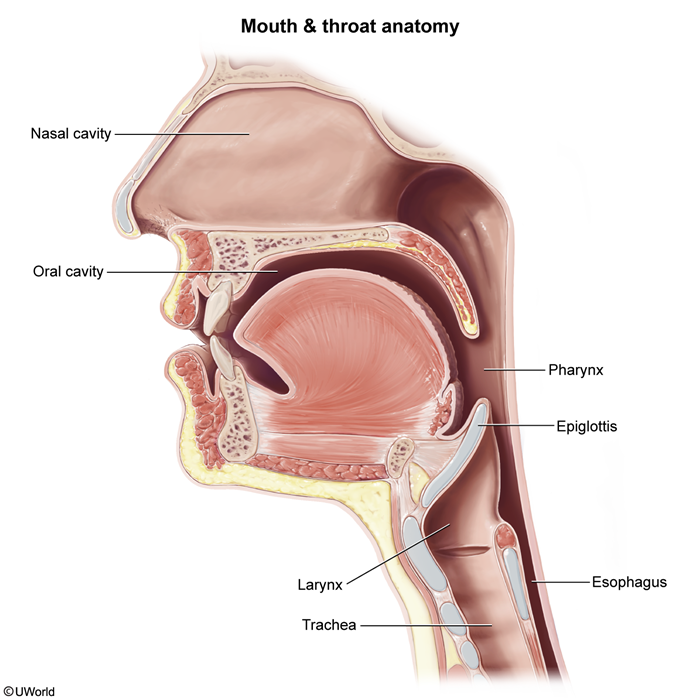
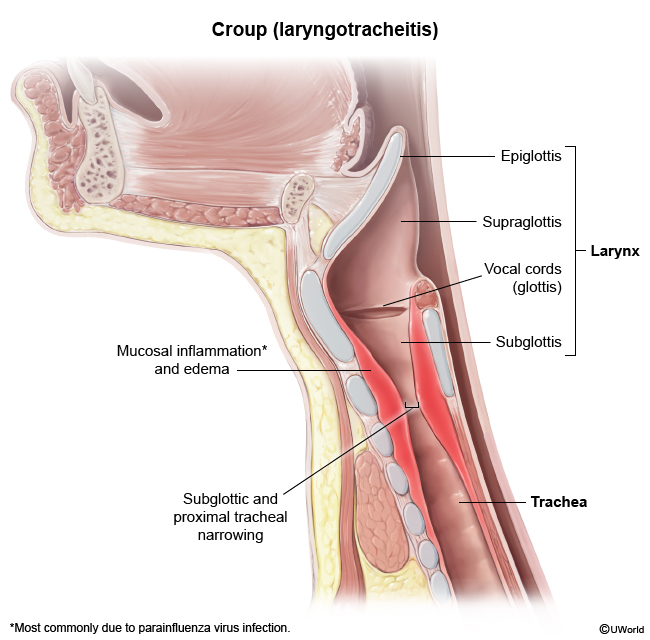
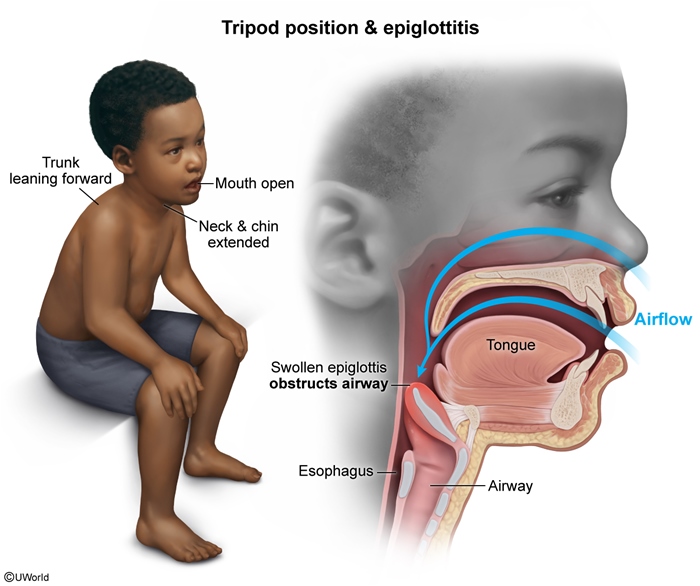
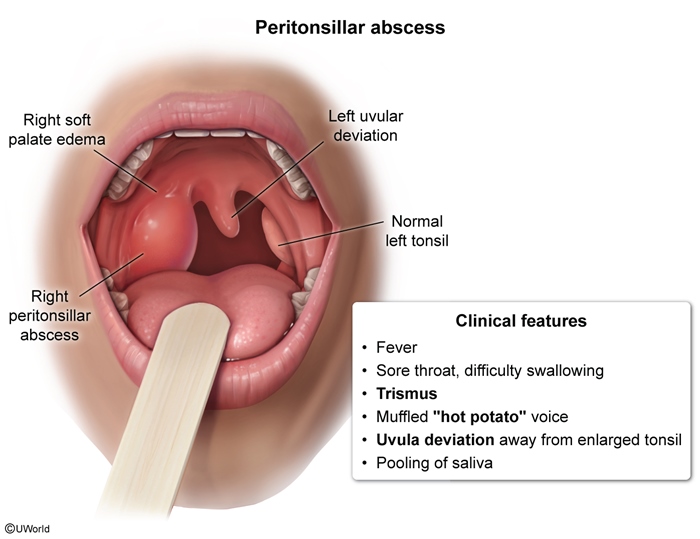
Images
